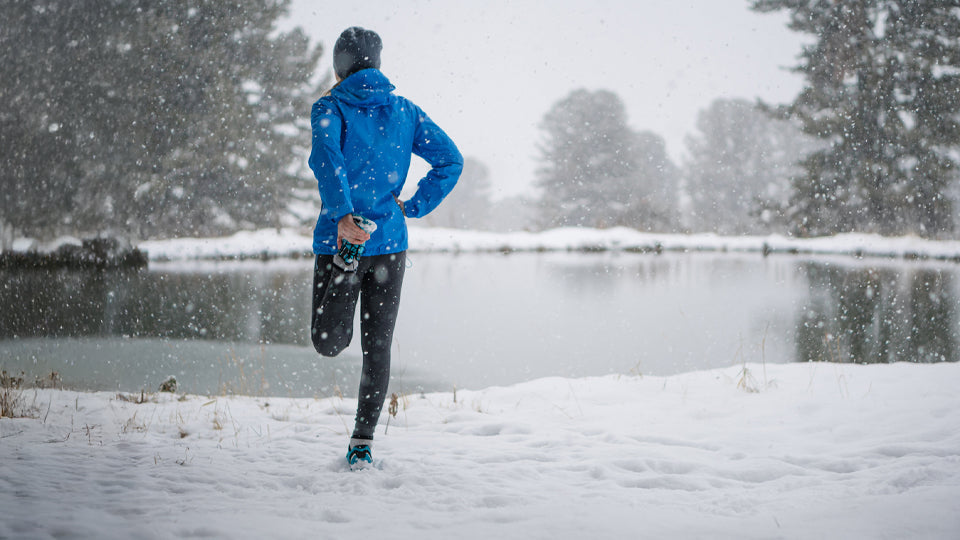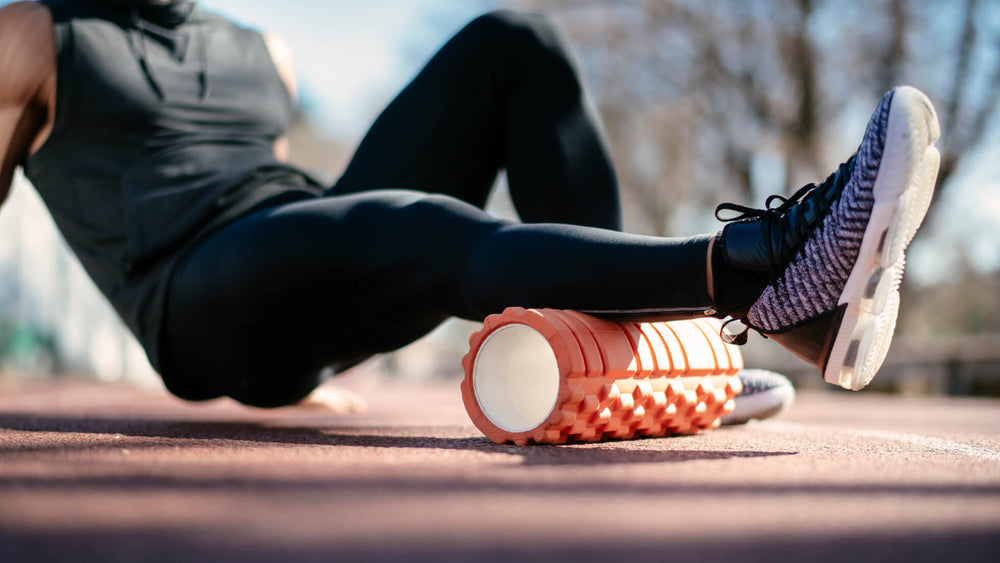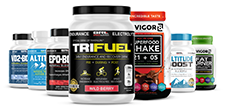How to Dress for Winter Running: From Clear, Crisp Days to Polar Vortex Cold

When the mercury drops and fair-weather runners retreat to their treadmills, dedicated athletes know that winter running offers its own special magic. With the right approach to layering and some strategic gear choices, you can maintain your training through the coldest months while staying comfortable and safe.
The Golden Rule of Winter Running
Before diving into specific temperature ranges, let's establish the fundamental principle of cold weather running attire: start cold. If you're perfectly comfortable standing at your front door, you're overdressed. Those first 10–15 minutes should feel slightly chilly — especially on your extremities. Your body will warm up as you move, and starting cool prevents the dangerous combination of sweat and cold temperatures. If you’re not sure how cold you should feel, consider bringing an empty running vest or hydration pack and stuff layers in there as you shed them. Or, start by running loops near your house or car so you can stash layers there as you warm up.
Dressing for Different Temperature Ranges
When temperatures hover between 40–50°F, you're in the sweet spot of running weather. A light long sleeve or even a warm short sleeve will suffice, paired with your standard running shorts or capris. You might want light gloves and a thin beanie or headband, but don't overdo it. Many runners will wrap a buff (aka neck gaiter) around their wrist which can be used as a hat or headband in a pinch as well.
As temperatures dip into the 30–40°F range, you'll want to add some strategic layers. A technical long sleeve base layer under a light running jacket or vest provides core warmth without bulk. Running tights become essential, and those light gloves and beanie are no longer optional. Add a neck gaiter that you can pull up or down as needed.
The real challenge begins when temperatures fall into the 20–30°F zone. This is when strategic layering becomes crucial. Start with a merino wool or synthetic base layer — never cotton, which holds moisture and can cause you to get clammy and cold, which is never good in winter temperatures. Add a light insulated jacket and consider wind-resistant pants over your tights if there's any wind chill. Your accessories game needs to level up too: thermal gloves, a warm beanie, and a proper neck gaiter become essential gear.
Dealing with Serious Cold
When the thermometer shows 10–20°F, you're entering serious winter running territory. Your base layer should be heavyweight and moisture-wicking, topped with an insulated running jacket — consider something that’s fleece-lined. Both your running tights and outer pants should prioritize warmth and wind resistance. At these temperatures, your extremities need extra attention: insulated gloves or mittens, a thermal beanie, and a neck gaiter that can protect your face. If it's windy, don't hesitate to wear goggles — protecting your eyes becomes crucial for comfort and safety.
For those brave souls running in temperatures below 10°F, layering becomes an art form. Start with the heaviest weight thermal base layer you can find. Add an insulated mid-layer, topped with a wind-proof shell. Your legs need similar treatment: thermal tights under insulated running pants. Protect your extremities with heavy mittens (consider adding hand warmers), a balaclava, and goggles. At these temperatures, using face tape or Vaseline on exposed skin isn't just an option — it's a necessity. Finally, take a cue from ultra endurance winter athletes and keep an “Oh Sh*t!” jacket in your car or on your person. This should be an oversized down jacket that you can throw on to stay warm should you get injured, wet, or need to remain stationary for some other reason.
The Wind Factor and Snow Considerations
Never underestimate wind chill. A 30°F day can feel like 15°F with significant wind, so always check the "feels like" temperature when planning your outfit. In windy conditions, prioritize wind-proof outer layers and face protection.
Deep snow brings additional challenges. Waterproof gaiters become essential gear, preventing snow from entering your shoes and soaking your socks. If you're dealing with serious powder, consider running snowshoes — they're a game-changer for winter training and these days, you can find lightweight running snowshoes made of foam with studs for traction. Waterproof socks or a vapor barrier system can keep your feet dry and warm.
Managing Moisture: The Silent Winter Running Enemy
The biggest challenge in winter running isn't the cold itself — it's managing moisture. Sweating in cold temperatures can be dangerous, as wet clothing loses its insulating properties and can lead to dangerous cooling. The key is ventilation and adaptability. Start with zippers closed, but be ready to open them as you warm up. For longer runs (2+ hours), consider carrying a spare base layer; changing out of a wet base layer can make a huge difference in comfort and safety.
Making the Call: When to Stay Inside
While proper gear can make most winter conditions manageable, there are times when discretion is the better part of valor. When windchill drops below -20°F, or when conditions include freezing rain or significant ice, consider taking your workout indoors. The same goes for situations with poor visibility or extreme winds. Remember: there's a difference between being tough and being reckless.
The Bottom Line
Winter running doesn't have to mean months of misery. With thoughtful layering, attention to conditions, and the right gear choices, you can maintain your training through the coldest months of the year. Pay attention to what works for you — every runner experiences temperature differently, so use these guidelines as a starting point and adjust based on your personal experience.
Remember, there's something uniquely satisfying about returning from a winter run, knowing you've conquered both the distance and the elements. Stay warm, stay smart, and keep running!
Take the next step in your training regimen: Try any BRL Sports supplement risk-free! If our natural nutritional products aren’t the best you’ve ever used, simply return your purchase for a 100% refund — no questions asked!
Also in Inspiration & Perspiration

High Altitude Supplements: Complete Guide to Training & Prevention (Altitude Sickness Solutions)
Support endurance and reduce altitude stress with supplements that improve oxygen efficiency, stamina, and recovery in high-altitude conditions.

Best Supplements For Runners: Complete Guide By Training Phase (Base, Peak, Taper & Race Day)
Discover the best supplements for runners by training phase—base, peak, taper, and race day—to boost endurance, recovery, and performance.

Creatine for Endurance vs. Sprint Efforts
Creatine isn’t just for power—learn how it boosts sprint speed, recovery, and endurance performance.


